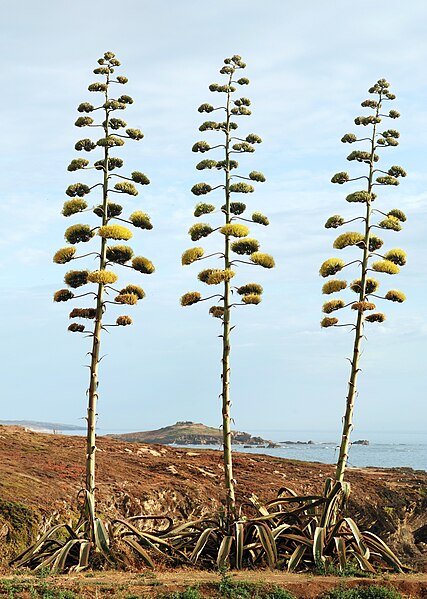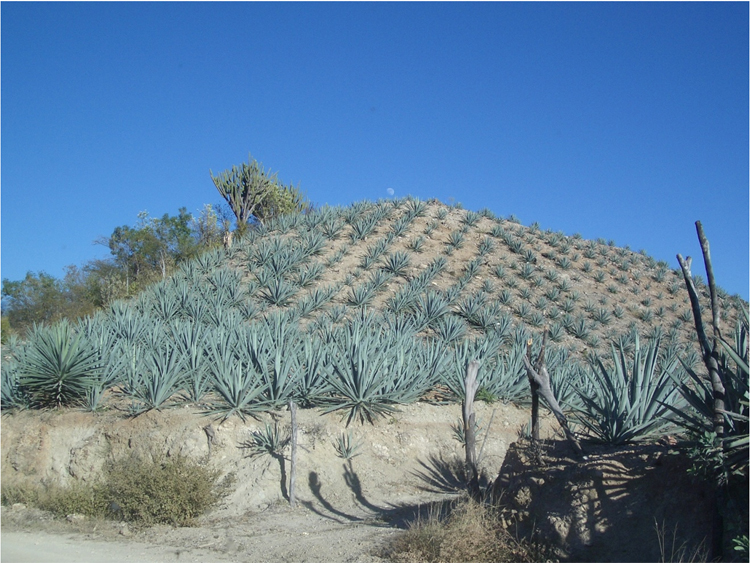The Agave genus consists of about 200 species of the family Asparagaceae, and typically grow in arid and semi-arid climates.1
Agave plants are succulents, but don’t let it fool you; these succulents can grow much larger than your typical ornamental varieties can. Some agave species can grow up to eight feet tall (and much taller with the flower stalk included!) with leaves that can stretch a dozen feet across.2

Their succulent tissue allows agave to thrive in their desert habitat.3 The thick leaves store water, and the waxy coating on the leaf surface helps to prevent water loss. Many varieties of agave have leaves that can extend to nearly a foot wide, are smooth and rigid, and have sharp teeth along the leaf edges.2
While agave is grown worldwide as an ornamental plant, there are also numerous practical uses for the plants. In Mexico, different varieties of an alcoholic drink called mescal are made from agave by chopping off the tip of the flower and harvesting the sap that flows from it. The sap is then fermented into a drink called pulque, and can then be distilled to make mescal.6
The juice from the core of the plant can also be used to produce agave nectar, which is commonly used as a sweetener as a natural sugar substitute. Additionally, the tough fibers within the leaves can be extracted and used for rope, cloth, and matting.4, 5
Notable agave species:
Century Plant
Agave americana, commonly known as the century plant, grows primarily in the Southwestern United States and in Mexico.2 The century plant got its name because it is commonly thought that the plant flowers every 100 years. While it doesn’t take that long to flower, the century plant will bloom between 10 and 30 years after maturing. Not only does the plant take an exceptionally long time to flower, century plants are monocarpic, which means that they flower only once in their life.1

After flowering, the century plant dies.
But all is not lost! After death, the plant leaves behind many growths near its base that can be replanted.
Blue Agave
Agave tequilana, commonly called blue agave, is probably your favorite plant on this website. The scientific name has already given you a big hint, but blue agave is known as the main ingredient in producing tequila.6 The heart of the blue agave is known as the piña in Mexico, which also happens to be where the piña colada gets its name.

The piña is harvested from the plant and is then cooked, shredded, and fermented until tequila is finally made.6 The piña typically takes 10 years until it reaches maturity and can be harvested. Once its been harvested, the piña doesn’t regenerate and another blue agave plant will have to be planted in its place. The best things in life require patience.

Our greenhouse has a pair of beautiful agave plants. Come check them out, just don’t expect any drinks!